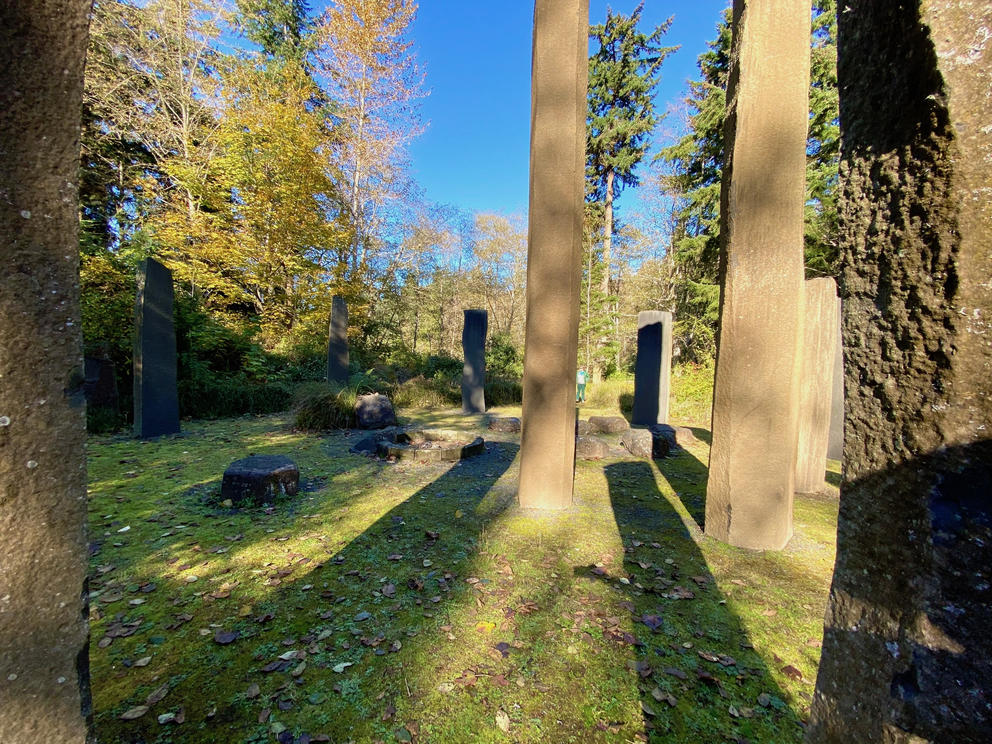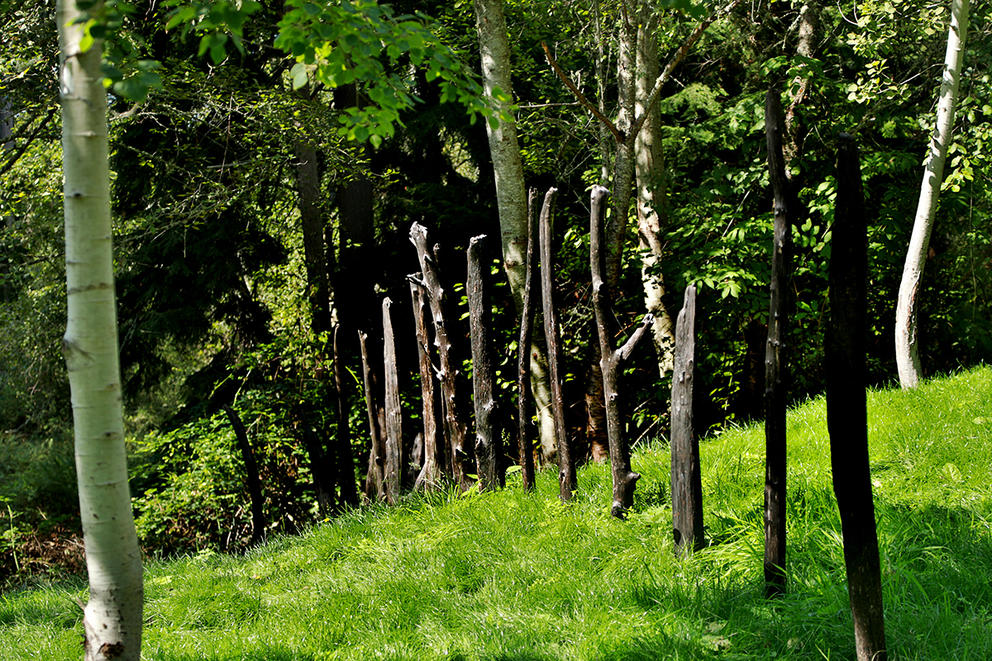November is Native American Heritage Month, but I think about that exchange all the time. The woman’s answer knocked me out of consumer panic mode and, moreover, made me think differently about the passage of time — particularly the way stories unspool in this era of binge-watching and doom-scrolling.
As I write this, our presidential story is still unspooling, more slowly than many people would wish.
Over this past week, we’ve all been sharing ways to escape the election news vortex, whether nature walks to soak in the incredible fall colors — the Seattle Japanese Garden has been particularly ablaze — or websites like the Election Distractor (featuring videos of dolphins smiling, waterfalls splashing and swans a’swimming). I personally find Window-Swap.com both engaging and soothing, a literal perspective shift courtesy of quiet, user-submitted video loops from all over. Gaze upon riverfront activity in Bordeaux, high-rise window washers in Seoul or the sunset over Moscow. Anywhere but here!
Also good for the sanity: diving deep, with Orcasound’s underwater hydrophones, installed at Port Townsend, Bush Point and Haro Strait. On Election Day, I heard quite a kerfuffle of orca chatter — the wisest of pundits. Even when whales aren’t around, it’s calming to hear the swish and gurgle of the Salish Sea.
I took a break from the tension last weekend and ferried across the Puget Sound to check out the Earth Sanctuary on Whidbey Island. The 72-acre nature reserve (open daily during daylight hours, $7) features peaceful paths through mossy, forested terrain that opens up onto a series of sculpture gardens.
Founder and environmental artist Chuck Pettis has installed two “stone circles” in the woods — Stonehenge-style arrangements of towering basalt columns hewed from the Columbia River area. There’s also an impressive “Dolmen Megalith,” a 20-ton balanced-rock sculpture that Pettis says is “the first dolmen to be built in the U.S. during modern times.”
During my walk I saw two eagles, an osprey and a six-point buck, the last of which bested me in a long staring contest. I also saw the new “Ley Line” installation, which Pettis built from charred driftwood. He arranged the logs upright, along a mapped “ley line,” one of many energetic lines that some believe crisscross the globe. As recommended, I stood between the driftwood poles to experience the Earth’s energy. After shaking off my skeptical stance, I felt a pleasant hum.
The preserve also features two Medicine Wheels, created by Klaw-osht, a shaman from the Nuu-chah-nulth traditional territories on Vancouver Island. The Gray Whale Medicine Wheel is also a shrine for whales — featuring a real baby whale skull. Coming upon a large whale skeleton atop a small wooded hill felt like something out of a fairy tale, something outside of time.
Which brings me to what most captivates me about the Earth Sanctuary: Pettis’ expansive thinking about time. When he embarked on the nature preserve 20 years ago, he did so with a carefully mapped 500-year plan: to create an old-growth forest for the Earth’s future.
Thinking about time on a wider scale makes our current election madness feel like an infinitesimal blip in the grand scheme. That doesn’t mean it isn’t hugely important right now, but it does help unclench my jaw.
Also helpful: remembering that Art Saves — in some cases literally, as in a much-shared photo from the Netherlands this week, in which a metro train went off the rails 30 feet about the ground and was “caught” by the fluke of a whale-tail sculpture (must-see photos here!). The 20-year-old sculpture, designed by architect Maarten Struijs, is named “Saved by the Whale’s Tail.”
Here in Seattle, we can only hope the undulating folds of architect Frank Gehry’s MoPOP might make the same catch, should the Monorail skip the tracks.
In less daring escapes, consider some of the art available this week. The Seagull Project is one of several local theater companies making a pandemic pivot to podcasts. The group recently released Time’s Signature, a new (free) audio collection of classic stories read by local actors, including the especially timely “One Friday Morning,” by writer Langston Hughes, read by Claudine Mboligikpelani Nako.
More sanctuary for the ears: The excellent Benjamin Hunter Quintet will perform original music reflecting the Black diaspora (Nov. 6, 7 p.m. $10-$15) as part of the ongoing Earshot Jazz Festival online. The Hillman City-based multi-instrumentalist tells Earshot that although live gigs have disappeared, the pandemic has given us one gift: time: “Time to be alone with ourselves. Time to reckon with that isolation. Time to embrace it.”
Something to consider before resuming your regularly scheduled election anxiety.
That Native Works notecard I inquired about, by the way, was an image of “Dukwebah,” or “the transformer” in Coast Salish legend, drawn by artist Cleo Keahna. I don’t know and can’t tell the story, but Sound Theatre is staging a radio play version, Changer (adapted by local storytellers Fern Naomi Renville and Roger Fernandes), later this month.
Until then, I’ll share the much-shortened summary provided by Native Works: “He transformed a group of people fighting, warring, pulling each others’ hair with the medicines we would use — sage, cedar, sweetgrass.... Dukwebah made kindness from cruelty and became a grandmother over time, pulling tides.”
Get the latest in local arts and culture
This weekly newsletter brings arts news and cultural events straight to your inbox.









